

Suunto Blog
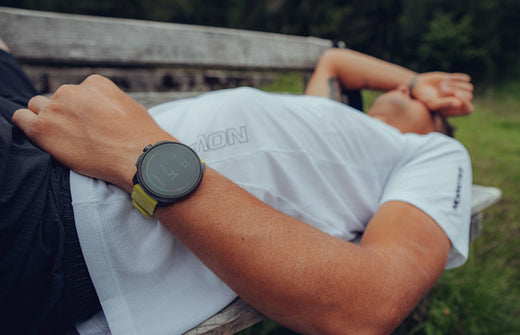
How to use HRV to optimize your recovery
Heart rate variability (HRV) is a helpful metric for endurance athletes. Read on to learn why there’s a buzz around it and how to use Suunto to track heart rate variability.
First, it is good to understand what Heart Rate Variability (HRV) is. As an example, when your heart rate is 60 beats per minute, each interval is not exactly one second. There’s a slight variation in the duration between the beats. HRV is a quantitative measure of the variation in the time intervals between consecutive heartbeats.
The interesting point with HRV is that it serves as an indicator of the balance within the autonomic nervous system and offers valuable insights into an individual's overall health and stress levels. More variation generally means the parasympathetic nervous system is doing its job as a regulator.
Various factors, such as heavy training, mental stress, or the presence of an illness like the flu, can influence HRV readings.
Suunto Race, Suunto Vertical and Suunto 9 Peak Pro GPS watches can track your HRV during your sleep. Nighttime measurement is a reliable and easy way to gather comparable HRV data. Continuous HRV monitoring allows for the calculation of the average Root Mean Square of Successive Differences (RMSSD) value, a commonly employed metric for quantifying HRV.
You can see the HRV data anytime as a mini widget in your watch and in the Suunto app’s Training zone.
Your recovery status is evaluated by comparing your 7-day average HRV with your normal range.
Interpreting HRV Data
Heart rate variability is highly individual. As said, higher HRV values generally indicate better autonomic balance, although the assessment should always be contextualized within an individual's normal range.
At Suunto, we define your normal range over a 60-day period and then compare your rolling seven-day average with that baseline. A minimum of 14 measurements needs to be gathered over the 60 days to define your normal range. For the seven-day average, a minimum of three measurements is needed. So, if you are new to measuring HRV with Suunto, you will have HRV data even after the first night, but the data will get more defined as more data is gathered.
By comparing the long-term values with short-term trend, you will get an understanding of load and stress you are putting on your body.
If your HRV values consistently fall below your normal range, it is an indication of a compromised recovery state. This could be caused by chronic stress, inadequate sleep, overtraining, or an underlying health condition.
It is normal that after a very hard effort or a race, your HRV drops below the normal range for a day or two.
If your HRV rises abnormally high (above a certain standard deviation) within a day or a few days, the app indicates with a yellow or red that you are likely experiencing abnormal amounts of recovery (parasympathetic nervous system activity). This is often in response to accumulated amounts of stress.
Suunto app visually represents your HRV recovery status as a bar indicator, offering insights into your recovery.
How to use HRV in daily training with Suunto
Suunto utilizes overnight measurements to capture HRV data. To obtain HRV measurements, it is necessary to wear the watch while sleeping and ensure that sleep-tracking functionality is activated.
Sync your watch regularly with the Suunto app to see the latest data.
Compare your HRV measurements with your training load. Look for patterns and relationships between your HRV values and the intensity or volume of your workouts. This can help identify how your body responds to different training stimuli.
Compare your HRV values with your resting heart rate. Generally low resting heart rate and a high heart rate variability are good indicators of sufficient recovery.
If your HRV readings indicate a decrease or significant deviation from your baseline, it may suggest a higher level of physiological stress or insufficient recovery. Consider modifying your training plan by reducing the intensity or volume of your workouts to allow for adequate recovery.
Use HRV as a guide to schedule regular recovery days or lighter training sessions when your HRV values indicate a need for more rest.
Remember that HRV can vary between individuals, so it is essential to understand your own personal baseline and response to training. It's important to note that with HRV it's good to look at other factors that impact recovery state such as training stress balance, sleep volume and changes in feeling.
Heart rate variability measurement is available in Suunto Vertical, Suunto Race and Suunto 9 Peak Pro GPS watches.
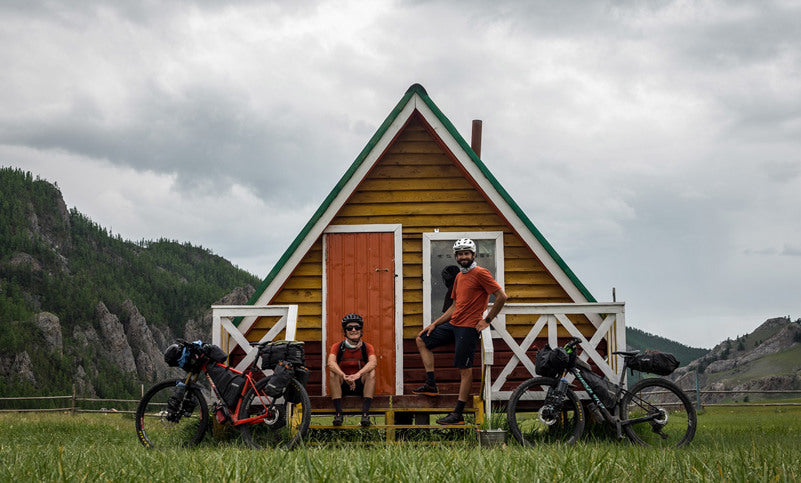
Nomadland – Bikepacking in Mongolia
Words and images by Alba Xandri and Erreka Calmet
Last summer we bikepacked in Mongolia, across 1,800 kilometers of countryside. We discovered many paths and tracks, experienced inclement weather and pushed our bikes for kilometers, climbed 3000-meter passes, subsisted on the local fare of meat and milk.
Mongolians are warm souls and hospitable people. They helped when it was very hot and there wasn’t any source of water nearby, when the lightning and thunder wouldn't stop or when they simply offered their hospitality. Despite the language barrier, we were always welcome to their nomadic daily life and their yurt’s door was always open.
Mongolia far exceeded our expectations. It is a backcountry bikepacker’s paradise. You can both ride and camp almost anywhere. Only ten percent of the roads are paved and half the population lives in the capital, Ulaanbaatar. This meant that some days our only company was herds of yaks, horses, sheep, and goats.
Above all else, Mongolians have stolen our hearts. More than the endless landscapes, swimming in cold rivers, pedaling through remote areas, or camping under the stars.
WATCH NOW: NOMADLAND
NOMADLAND from Bike2reality on Vimeo.
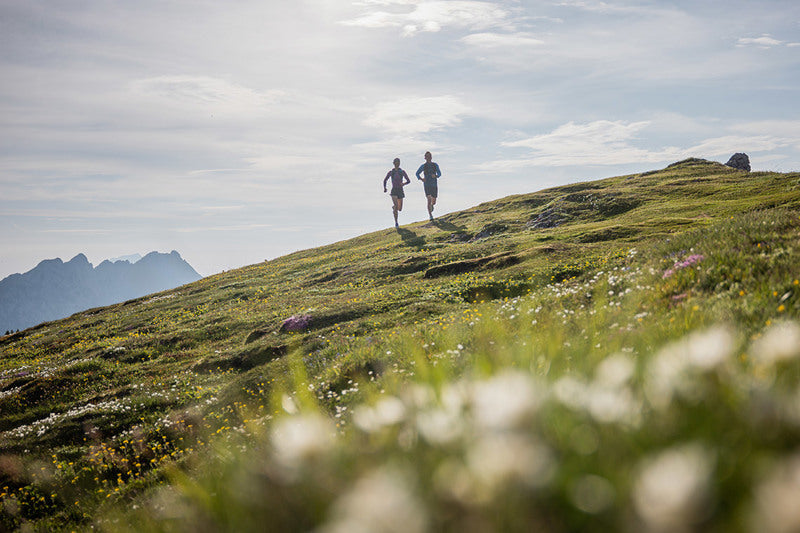
Discover dozens of SuuntoPlus sport apps for your Suunto
Automatic sprints, race nutrition, loop counters, marathon estimator and more! SuuntoPlus sport apps are easy to use watch functionalities that enhance your experience with your Suunto watch with use case specific benefits.
To get started, browse the selection below and in Suunto app’s SuuntoPlus Store, select which ones you want to use on your watch and activate them before starting an exercise.
You can use all SuuntoPlus sport apps with Suunto Vertical, Suunto Race and Suunto 9 Peak Pro watches. Most of the SuuntoPlus sport apps are also compatible with Suunto 9 Peak, Suunto 9 Baro, Suunto 9, Suunto 5 Peak and Suunto 3 watches.
Read on and find your new favorite sport app!
Learn how to get started with SuuntoPlus sport apps
Training & Physiology
HR zones
This sport app shows you the cumulative time on each zone during the workout.
Fused zones
Fused Zones shows which intensity zone you are currently in, looking at different intensity metrics and based on that evaluating the best matching as a result.
Peak Pace
Peak pace gives you real time statistics of your peak efforts on your run.
Peak Power
Peak power gives you real time statistics of your peak efforts.
Movement
This sport app measures your movement with wrist acceleration. This gives new type of insights in sports which involve rapid movements.
Trainingpeaks (HR)
Helps to understand the workout effort and training stress in real time with Heartrate Training Stress Score (TSS(HR))
Trainingpeaks (cycling power)
Helps to understand your riding effort in real time with Normalized Power (NP), Training Stress Score(TSS) and Intensity Factor (IF).
Trainingpeaks (running pace)
Helps to understand your pacing in real time with Intensity Factor (IF),Running Training Stress Score(TSS(r) ) and Normalized Graded Pace (NGP).
Strava
Get specific about how much work goes into your activities with real-time Relative Effort
Burner
The relation between fat and carbs burned by exercising depends on your intensity.
Training Tools
Manual interval (pace)
The manual interval sport app gives you a simple tool to follow your interval session on the fly.
Manual interval (power)
The manual interval sport app gives you a simple tool to follow your interval session on the fly.
Manual interval (hills)
The manual interval sport app gives you a simple tool to follow your interval session on the fly.
Sprint (running pace)
Track sprints automatically while running or cycling to see the number, distance, and time of each interval during your training session
Sprint (cycling power)
Track sprints automatically while running or cycling to see the number, distance, and time of each interval during your training session.
Loop (speed)
Automatic location-based lap insights help you analyze the stats for each loop.
Loop (pace)
Automatic location-based lap insights help you analyze the stats for each loop.
Loop (power)
Automatic location-based lap insights help you analyze the stats for each loop.
Ghost Runner
Catch the virtual ghost runner to practice your pacing or just for fun.
Fitness Testing
FTP test
Functional Threshold Power (FTP) test is designed to give riders an understanding of the highest average power they can maintain for one hour.
Cooper test
The goal of the cooper test is to run as far as possible in 12 minutes to estimate your VO2Max value.
Anaerobic threshold
The test will approximate the anaerobic threshold for running and estimate the anaerobic threshold pace and heart rate.
Aerobic decoupling
The aerobic decoupling will assess your aerobic fitness by evaluating the decoupling effect during longer workouts.
Bleep test
Bleep test – or Beep test – is the most common fitness test used in the world especially popular in team sports to test your current fitness.
Racing
Race companion
Race companion gives athletes a simple tool to get key information with them to the race.
Race nutrition
With this sport app, athlete can setup the timing for each intake and then follow the plan while flying down the mountains.
UltraRace time
When preparing for a long ultra race, it is motivating to see how this pace equals to the potential race time.
Marathon estimator
Marathon estimator gives you an estimated finish time based on your current pace, duration done and remaining distance.
Half Marathon estimator
Half marathon estimator gives you an estimated finish time based on your current pace, duration done and remaining distance.
RaceTime
This sports app helps you to see how your current pace equals to the potential race time over different race distances.
Backyard ultra
The Backyard Ultra is a running event where runners will run 6.7km each hour. As long as they last.
Sport specific
Shoe tester
The shoe tester app is a protocol on how runners can test the impact of different running shoes with a dedicated testing protocol.
Cadence coach
The cadence coach will show you live cadence and stride length, helps you use the right running technique to avoid injuries.
Running Economy
Running economy is the assessment of a runner’s efficiency by analysing their input (heart rate) and output (running pace with NGP).
SwimRun
The swim run sport app gives you key stats for your swimrun race with automatic transitions from run to swim and back as many times as needed.
Duathlon
Duathlon sport app is designed to automatically switch between run and ride views in hectic race scenarios to give you the right data.
SwimTimer
Swim timer is designed to provide swimmers with a better understanding of their interval sessions showing interval counts, rest time etc.
Gym timer
The gym timer can be used to follow the rest times of a workout.
Tabata
Tabata protocol is used as a high intensity workout such as circuit training, consisting of 20 seconds of hard effort and 10 seconds of rest.
Surfer
This sport app gives you all the key stats for your surf session. How many waves did you surf, time surfed and paddle.
Golf score
Golf score sports app is a handy tool for keeping count of number of strikes during the golf.
Tennis score
Tennis score sports app is a handy tool for keeping the tennis score on your wrist while playing.
Badminton score
Badminton score sports app is a handy tool for keeping the badminton game score on your wrist while playing.
Soccer score
Soccer score sports app is a handy tool for keeping the match statistics on your wrist while playing.
Score counter
Score sports app is a handy tool for keeping the score count while playing games.
Disc golf
A handy tool for keeping score and measuring distances during your disc golf game.
Sail racer
Enables you to synchronize your start time to the official start time of the race to get a countdown on your watch.
Outdoor experience
Emergency Info (I.C.E.)
Store essential contact information, allergies, blood type and other medical details under the “ICE” as a sports app.
Safe
Quick access to your GPS coordinates and other key information of your current location as well as your starting point.
Climb
Keep track of your effort while hiking up a mountain, rock climbing, doing hill repeats in your backyard or running upstairs.
DirectPath
The DirectPath gives you an understanding of the direct path between two points you have just covered and the efficiency on how well you were able to follow this line.
Drink Alert
Use the Drink alert to remind you regularly to rehydrate based on the weather conditions.
LastKm/Last mile Pace
In trail running, the pace can change drastically between uphills and downhills in, the last KM/mile app give you the live rolling kilometer/mile pace to follow.
CO2e
CO2e sport app shows how much CO2 you have saved compared to if you would have driven a car.
Moon
The app provides you with information about the moon phases.
Sun
The app provides you with information about the sunrise, sunset as well as time for dusk and dawn.
Big numbers
Sport app that gives you the data in bigger letters to make it clearly visible.
Variometer
The Variometer SuuntoPlus™ feature is a handy tool to keep track of your vertical speed.
Weather
Keep alert with storm alarms, measure water temperature or notice if your hike is going past the sunset.
Weather forecast
The sports app gives you the forecasted weather you can rely on during your long rides and hikes.
Devices
CORE body temperature
With this sport app you can pair your Suunto with a CORE body temperature sensor - to train smarter & perform better.
ActiveLook
With this sport app you can connect your Suunto to ActiveLook Smart Glasses and see key excercise data right in your field of view.
TrainRed
When using this sport app your TrainRed muscle oxygen (SmO2%) sensor will provide real-time feedback on the oxygenation status of muscles, helping you optimize your training and performance.
Learn how to get started with SuuntoPlus sport apps
10 SuuntoPlus sport apps for runners
Lead image by The Adventure Bakery
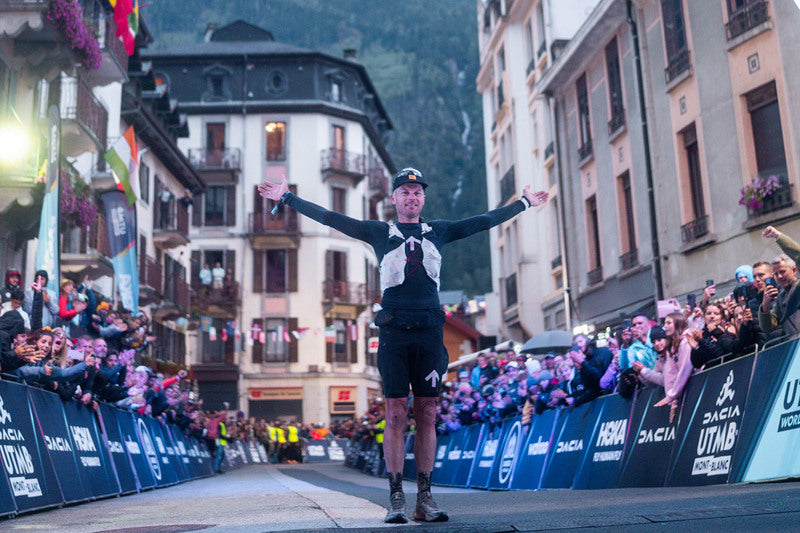
Christian Meier wins the TDS in severe conditions
TDS was the toughest race of this year's UTMB week. Even in normal conditions, it is one of the most technical races of the week-long festival and, this time, the temperatures dropped and brought snow and poor visibility to make it even harder. The days before the race, it was over 30°c in Chamonix Valley. On the race day the temperatures barely rose to 10°c.
The organizers had to change the route slightly which made it eight kilometers longer than normal. So, when standing at the start line in Courmayeur at midnight on August 28, the runners had 153 kilometers of mountain terrain ahead of them.
The TDS stands for Les Traces du Duc de Savoy (“In the footsteps of the Dukes of Savoie”). The route starts in Courmayeur in Italy and circles Mont-Blanc on the west side to finish in Chamonix in France. It has over 9000 meters of total ascent.
Suunto ambassador Christian Meier took his biggest international ultra-running win to date at the TDS with a winning time of 19:36:35.
“This is definitely my biggest victory to date. As I am quite new to running, this has been the first year, I could considerably increase my training volume in line to what I believe you need to do at this level of the sport,” he said after the race. With “quite new to running” Meier referred to his background: he has built his strong endurance engine as a professional cyclist and turned to running only three years ago.
“Even though fitness may not have previously been the factor, leg conditioning definitely was; too many miles and I would end up injured. Like all good things in life, it took time and patience to build up the resistance to be able to go the distance. I was fortunate to train the months leading up to the race with some world-class running mates so I knew my form was pretty good but at the end of the day you need everything to come together during the race. I thought maybe I could fight for the podium, but the win was a pleasant surprise!”
Christian planned to race conservatively and at his own pace. He took the lead at around the 90 km mark and never looked back.
“My best results have come when I have run within myself,” he says. “This race was going to be 6-8 hours longer than anything I had previously done, and I had a lot of respect for that. I did feel that the plan worked well and I managed to pace well, eat well, and look after some details that make the difference.”
The severe weather was a big factor. It had brought freezing temperatures, and low visibility, and made trails muddy. The snow line was at around 2200 meters on the course that topped out at 2581 meters. In some places, there was 15–20 cm of new snow.
“What really saved my race was navigation. There were moments when it was a total white-out. No trail, you could barely see the markers. Navigation really saved me there. And it was really an advantage. Some guys didn’t have navigation. They definitely lost time and it worked to my advantage. I am grateful for that.”
Christian raced with a Suunto Vertical. Suunto Vertical has detailed terrain maps, route navigation, altimeter, barometer, 85 hours of exercise tracking on the most accurate GPS setting, and more. Get to know Suunto Vertical HERE.
All images by The Adventure Bakery
READ MORE
The athlete-entrepreneur who knows the value of hard work
Courtney Dauwalter makes history at the UTMB

Paying it forward
Text and images by Jill Heinerth
Last summer, I embarked on a transformative journey alongside the passionate young environmental scientist, Kayla Martin. It was a season that left an indelible mark on both our lives, a tale of mentorship, perseverance, and the power of community.
Kayla Martin playing in the sea foam in Les Escoumins.
The story began when I seized a unique opportunity to nurture Kayla's burgeoning talent. She was a beacon of potential, and I was determined to foster her growth. Drawing upon the network of organizations that support me, I took a leap of faith and dipped into my personal funds to launch an expedition. This venture was more than just a scientific mission; it was the next step in her career in environmental science and communication.
As we prepared for the adventure that lay ahead, we ventured into local waters, diving to enhance our skills in the cold underwater environments we were about to explore and document. Yet, it didn't take long for me to realize that Kayla needed more reliable gear to navigate these unforgiving waters. In this critical moment, when determination met resourcefulness, Suunto came to our aid by transferring my annual gear support to her. Hollis, recognizing the importance of our mission, provided Kayla with a state-of-the-art sidemount harness, and Fourth Element crafted a snug, protective drysuit to keep her warm in the chilly depths. I passed along essential equipment like a backup computer, undergarments, and various other items she required for our underwater expedition.
A small plane lies in a freshwater quarry in Quebec, one of the first stops on their expedition.
The result was a remarkable collaboration that transcended the boundaries of our initial project. Our shared dedication to environmental preservation and scientific exploration continues to flourish. Fast forward to the present day, and Kayla has emerged as a trailblazing leader in her field. This year, she is at the helm of an expedition dedicated to surveying an undocumented shipwreck, an endeavor that exemplifies her unwavering commitment to education, conservation, and groundbreaking environmental research.
Our journey serves as a testament to the profound impact that a helping hand and the right tools can have on shaping a promising career. Diving is an expensive passion, and the financial barriers often deter young enthusiasts from pursuing studies that could safeguard our precious planet. This experience has reinforced the belief that if you encounter a young and eager individual in your midst, someone who harbors the potential to be a future leader in their field, consider rallying your community to lend support. When we equip and empower the next generation, the possibilities are limitless, and together, we can shape a brighter future for our world.
Watch now: How Great Lakes Freshwater is Linked to the Ocean
More people have walked on the moon than have been to some of the remote places Jill Heinerth has explored on Earth. Jill Heinerth is a veteran of over thirty years of scientific diving, filming/photography, and exploration. Her expeditions include the first dives inside Antarctica icebergs and record-breaking scientific missions in deep underwater caves worldwide.
Jill’s book INTO THE PLANET – My Life as a Cave Diver has drawn wide acclaim from the New York Times, Wall Street Journal, NPR, and even Oprah magazine. Her children’s book, THE AQUANAUT, has been selected by Dolly Parton’s Imagination Library as a part of her inspirational initiative. Jill bought her first Suunto gear in 1988 and still dives with Suunto.
For more info: www.IntoThePlanet.com
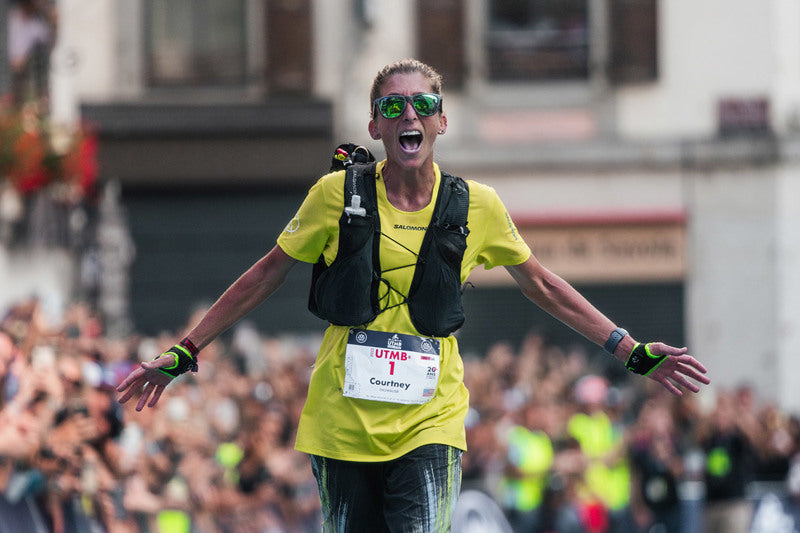
Courtney Dauwalter makes history at the UTMB
Suunto ambassador Courtney Dauwalter wins the UTMB® and completes her "Triple Crown Challenge".
Suunto ambassador Courtney Dauwalter became the first person ever to win the three legendary 100-mile ultra-trail running races, UTMB, Western States Endurance Run and Hardrock 100 in the same year. And not only in the same calendar year but within just two and a half months.
Courtney’s UTMB win also completed her UTMB hat trick. Saturday’s win was her third in the 170 km race around Mont-Blanc. Her previous wins were from 2019 and 2021.
“I think anytime we are given the opportunity to try something difficult or crazy we should absolutely take it. This was totally crazy and really, really difficult – but worth it,” Courtney said at the finish line, only moments after completing her unbelievable feat.
Courtney approached all three of the races as if each was the only race of her season. She didn’t think of the fatigue there might be and was giving it all that she had in each of them. Her tactic paid off as she set new course records at the Western States in California in late June as well as at Hardrock 100 in Colorado in July.
Courtney started the UTMB with that same intention; without being conservative with pacing.
“Let’s race how I normally would and see where that road leads us,” she thought.
It seems that her tactic worked out – until about two-thirds of the way. On top of one of the biggest climbs, the Grand Col Ferret, total body fatigue hit.
“The entire second half of the race was really, really hard. My body was not wanting to run anymore. My stomach was a little finicky. I almost lost my lunch on the streets of Champex Lac but luckily held it together and was able to will myself to this finish line.”
“Honestly I am not sure if I would have made it back here without Kevin, my husband, and some of my family crewing and all the insane fans out on the course. Thank you so much! That was one of the coolest things I have ever experienced! And the volunteers were just the best. Thank you all for helping me get back to Chamonix.”
The UTMB starts in Chamonix, France and circumnavigates the tallest mountain in Europe through Italy and Switzerland to finish again in Chamonix amongst the passionate trail-running crowd.
Courtney finished her race in 23 hours, 29 minutes and 14 seconds. The second female finisher, Katharina Hartmuth stopped the race clock – as well as her Suunto Vertical – in a time of 24:10:52.
Courtney ran the race with her trusty Suunto 9 Peak Pro. She likes the lightweight and compact design of the Suunto 9 Peak Pro. Despite the smaller form factor and 55-gram weight, the Suunto 9 Peak Pro has a 40-hour battery life with best GPS settings, great accuracy and all the features Courtney needed to make ultra-trail history – again.
All images by The Adventure Bakery
READ MORE
Ultra champ Courtney Dauwalter’s 6 tips for mental strength
Courtney Dauwalter and her pursuit of mind power
Be my adventure valentine: what you need to know to be the ultimate support person

































































